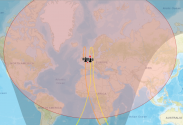I think I have figured out what exactly "Three-in-one" test means. It is actually a separation test between the missile's first stage and secodn stage.
For example, Ceres-1 Rocket completed its "three-in-one" test on 09/29/2019 and planned to launch its maiden flight earlier 2020. But everyone knows that Covid then hit in and everything was severely delayed and the actual flight date was 11/07/2020, one year after it completed such test.
So if the engine follows the timeline of Ceres-1, it should conduct its maiden in the middle of 2023 as there is no more COVID delay.
"(CASC) successfully completed the ground ignition test represented by the "three-in-one" joint test of a key model, creating a good new start for the full completion of the task in 2023."开年以来,401所一室全体职工迅速全面开展试验任务,一天之内在田王、辋川、白鹿原三地多点开展试验准备、点火等各项工作,成功完成了以某重点型号三合一联试为代表的地面点火试验,为2023年全年任务全面完成开创了良好新开局。
It was really quick and I don't even expect it to be this quick as they have completed the separation test during Chinese new year. Another possibility apart from ICBM is ORIENSPACE's Gravitation-1, which aimed to make its maiden flight by the end of 2023.
However, it is not likely to be this case. First of all, key model always means to be rocket/missile developed by CASC itself not other commercial company and particularly strategic rockets in official cliche. Furthermore, as the Ceres-1 example shows, this rocket should take maiden flight around the middle of 2023 whereas Gravitation-1 is very likely to be delayed until 2024. And most importantly, as it has been noted, no commercial rocket ever used T800 carbon fiber in its design.



